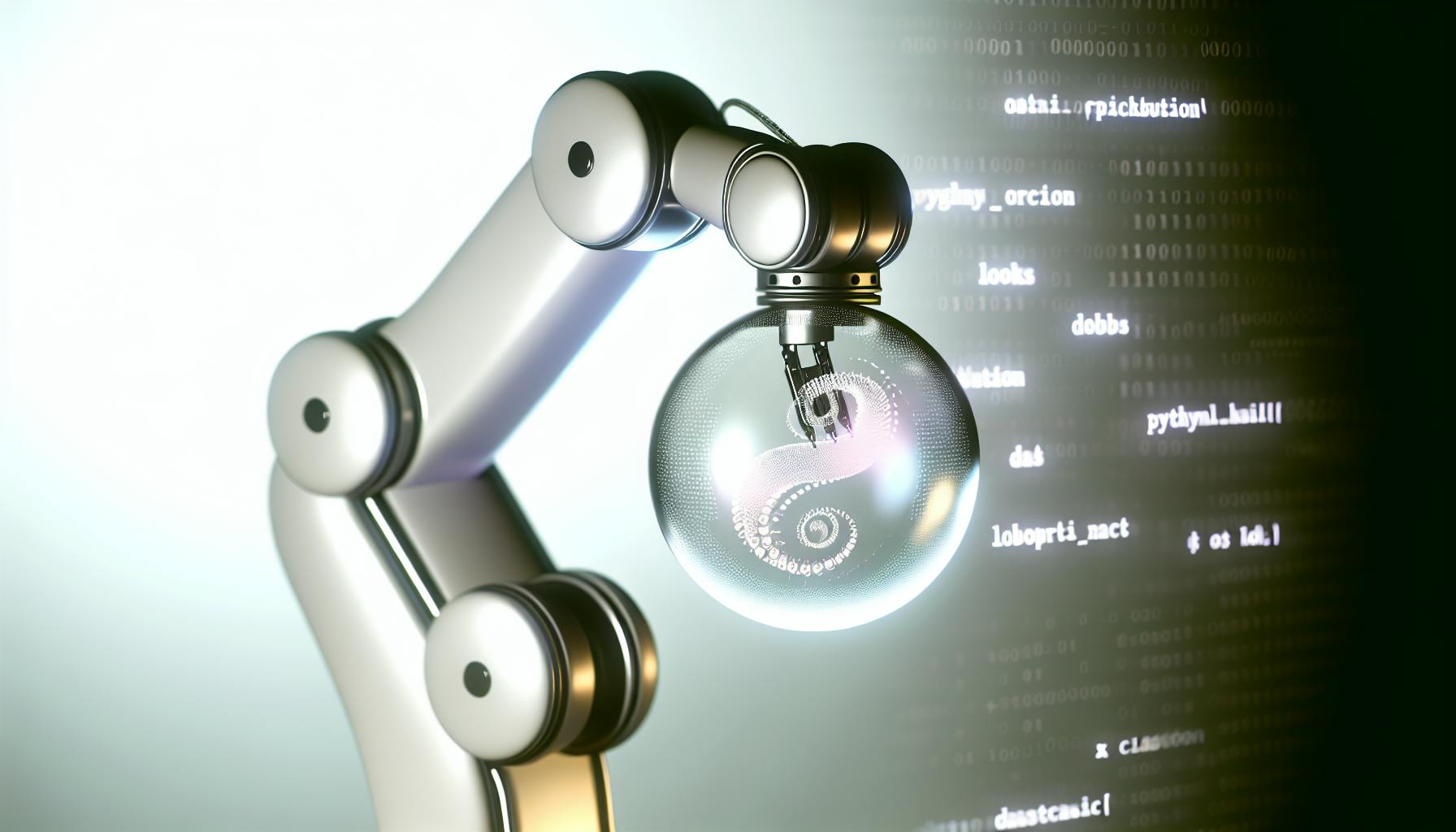Readers familiar with data science likely agree that graph theory concepts can provide powerful analytical capabilities.
This post explores how graph theory enables impactful real-world applications and advanced algorithms to extract insights from connected data.
We'll cover fundamental graph theory ideas, Python libraries for graph analysis, graph neural networks, implementing algorithms, and visualizations to demonstrate the vital role graph theory plays in progressing data science.
Introduction to Graph Theory in Data Science
Graph theory provides a mathematical framework to model connections and relationships in data. It has become an invaluable tool in data science for analyzing networked structures like social graphs, transportation networks, biological pathways, and more.
Defining Graph Data Science
A graph consists of nodes (or vertices) connected by edges (or links). Nodes represent entities like people, places, or things while edges show relationships between those entities. Weights can be assigned to edges to indicate connection strength. Key components include:
- Nodes - The entities in a graph
- Edges - The connections between entities
- Weights - Values that quantify the link strength
- Paths - A sequence of edges between nodes
- Cycles - A path that starts and ends at the same node
In data science, graphs enable modeling complex relational datasets as networks that can then be analyzed with graph algorithms.
Types of Graphs in Data Science
There are many categories of graphs used in data science:
- Directed vs Undirected - Edges have direction or don't
- Weighted vs Unweighted - Edges have associated values or don't
- Cyclic vs Acyclic - Contains cycles or doesn't
- Bipartite - Nodes split into two disjoint sets
- Temporal - Connections between nodes change over time
The structure of a graph can reveal insights about the interconnected data it represents.
Fundamental Graph Theory Concepts
Key concepts in analyzing graphs include:
- Degree - The number of edges connected to a node
- Trees - A connected acyclic graph
- Distance - Shortest path length between two nodes
- Density - Ratio of actual to possible edges
- Centrality - Relative importance of nodes
- Clustering - Extent nodes group together
Understanding these concepts allows applying graph algorithms like PageRank, community detection, and link prediction on connected data.
How graph theory is used in data science?
Graph theory is a useful mathematical framework for analyzing relationships and connections between data in networks. Here are some of the key ways it is applied in data science:
-
Social network analysis: Mapping social connections between people allows identifying influencers, communities, and information flow. Graph theory provides algorithms to quantify network properties.
-
Recommendation systems: Services like Netflix use graphs to map users, content, and interactions. This powers collaborative filtering models underlying recommendations.
-
Logistics and transport: Airlines model routes and schedules as graphs, letting algorithms optimize traffic flow, identify efficient paths, and prevent cascading delays.
-
Fraud detection: Graphs capturing financial transactions and account relationships enable identifying suspicious patterns like money laundering. Community detection spots coordinated fraud.
-
Biology and chemistry: Modeling molecular interactions, disease networks, and protein structures as graphs helps gain biological insights through topological analysis.
-
Infrastructure network mapping: Representing connections between servers, users, packets etc. as graphs allows monitoring performance, usage patterns and vulnerabilities in IT systems.
The common theme is transforming real-world data into graphs to harness the mathematical rigor and algorithms from graph theory - like finding clusters, central nodes, optimal paths, etc. This drives predictive analysis, complex pattern detection and decision optimization in data science applications.
How is graph theory used in algorithms?
Graph theory is widely used in the design and analysis of algorithms. Here are some key ways graph theory concepts are applied in algorithms:
Modeling Problems as Graphs
Many real-world problems can be modeled as graphs. For example, a road network can be represented as a graph with intersections as nodes and roads as edges. This graph representation allows graph algorithms to be applied to solve problems on these networks.
Pathfinding Algorithms
Algorithms like breadth-first search and Dijkstra's algorithm use graph traversal to find shortest paths between nodes. These are applied in GPS navigation, network routing, and other pathfinding problems.
Clustering Algorithms
Algorithms like minimum cut and Karger's algorithm leverage graph partitioning to divide networks into clusters. These facilitate community detection and data clustering applications.
Scheduling Algorithms
Scheduling problems mapped to bipartite matching enable optimal task assignment and resource allocation algorithms.
Network Analysis
Centrality measures, connectivity metrics, and other graph statistics derived from graph theory support network analysis and link prediction.
So in summary, graph theory provides the mathematical models and properties that enable the design of efficient, optimal algorithms for a variety of real-world problems. It plays a vital role in analyzing complex networks and developing algorithms that provide effective solutions.
What are the applications of graph theory in science?
Graph theory has many practical applications in fields like computer science, physics, chemistry, and more. Here are some of the key ways graph theory is applied in scientific research and analysis:
Modeling Molecular Structures
- Graphs can model molecules in chemistry and physics, with atoms as nodes and bonds as edges. Analyzing these molecular graphs reveals valuable information about chemical properties and reactions.
- For example, graph theory is used to study fullerenes in nanotechnology which have applications in medicine, electronics, and energy production. Analyzing fullerene molecular graphs aids engineering and design.
Analyzing Networks
- Many real-world systems form networks that can be modeled as graphs - social networks, computer networks, transportation systems, ecosystems, etc.
- Graph theory provides algorithms to study these networks, like finding efficient routes, highly connected nodes, and network resilience.
- For instance, graph analytics helps study disease transmission networks and develop targeted immunization plans.
Developing Efficient Algorithms
- Many computations involve relationships between discrete objects which form implicit graphs. Graph theory helps model and optimize these algorithms.
- Classic examples include scheduling problems, routing algorithms, and resource allocation optimization, with applications in logistics, traffic routing, workflows, etc.
Physics Simulations
- In quantum physics, graph theory enables large-scale numerical simulations for understanding complex quantum states and processes.
- It also aids in studying phase transitions and critical phenomena in materials through computational statistical physics methods.
So in summary, graph theory has become an indispensable tool for analyzing real-world networks and developing efficient algorithms across scientific disciplines. Its broad applicability stems from its flexibility in representing discrete objects and their relationships.
sbb-itb-ceaa4ed
How are graphs used in data science?
Graphs are a powerful tool for modeling relationships and connections in data science. Here are some of the key applications of graph theory and algorithms in data analysis:
-
Social network analysis: Graphs allow data scientists to study social structures and connections. Algorithms like page rank can find influential nodes, while community detection spots tightly-knit groups.
-
Recommendation systems: Similarity graphs capture item-item and user-user affinities. Collaborative filtering methods leverage these graphs to generate recommendations.
-
Fraud detection: Graph techniques help uncover fraudulent patterns and suspicious relationships in financial networks. Algorithms can flag outliers or tightly-connected subgraphs.
-
Supply chain optimization: Graph algorithms enable tracking resource flows and detecting bottlenecks or anomalies. This optimization helps businesses minimize costs and maximize efficiency.
-
Biological network analysis: Data scientists use graphs to model protein-protein interactions, gene regulatory networks, and neural connections in the brain. Centrality measures identify essential nodes.
Though graphs have many applications, choosing the right algorithms and libraries like NetworkX or graph neural networks is key to effectively analyzing the data. Graph-powered models provide actionable insights for data-driven decision making across industries.
Graph Theory Algorithms and Their Applications
Graph theory provides a rich set of techniques to analyze relationships and connections within data. These algorithms have diverse applications in data science for predictive modeling, recommendation systems, network analysis, and more.
Graph Data Science Python Libraries
Popular Python libraries like NetworkX, graph-tool, and igraph implement graph algorithms that data scientists can apply out-of-the-box. These include:
- Clustering algorithms like clique percolation to find dense subgroups. Useful for community detection.
- Centrality measures like PageRank to quantify node importance. Applications in ranking web pages.
- Shortest path algorithms to identify critical connections. Useful for network resilience analysis.
- Graph generators to synthetically model real-world networks. Enables sampling from graph distributions.
Graph Algorithms for Predictive Modeling
Graph neural networks (GNNs) are an exciting development in this space. GNNs use deep learning to make predictions about graphs.
- Link prediction - Predicting future edges based on current graph structure. Useful for friend recommendations.
- Node classification - Inferring node labels using graph topology and node features. Applications in fraud detection.
- Graph classification - Predicting graph-level labels like "social network" or "protein interaction network".
Graph Embedding Techniques
Graph embedding algorithms like DeepWalk, node2vec and struc2vec generate vector representations of nodes which summarize graph topology. These low-dimensional embeddings can then be used for various downstream predictions.
Key benefits include dimensionality reduction and meaningful vector similarities (nodes with similar graph positions have similar embeddings).
Maximum Matching and Bipartite Graphs
Algorithms like the Hopcroft–Karp algorithm can efficiently find maximum matchings in bipartite graphs, where edges only exist between two disjoint node sets.
Applications include matching job seekers to open positions, students to schools, organ donors to recipients, and more. The maximum matching helps maximize successful assignments.
Overall, graph algorithms enable impactful insights from relationship-rich data. As graphs continue to model more real-world phenomena, these techniques are only growing in relevance and applicability.
Graph Neural Networks (GNN) in Data Science
Graph neural networks (GNNs) are a class of deep learning models that operate on graph structured data, leveraging both the graph structure as well as node features for modeling.
Understanding Graph Convolutional Networks
Graph convolutional networks (GCNs) are extensions of convolutional neural networks (CNNs) that operate on graphs, aggregating feature information from a node's neighborhood using convolutions. By propagating information along edges, GCNs can learn complex patterns in graph data.
Exploring Graph Attention Networks
Graph attention networks (GATs) are a type of GNN based on self-attention, allowing different weights to be assigned to nodes in a neighborhood while learning node representations. This helps GATs address shortcomings of GCNs and learn dynamic, customizable node embeddings.
Real-world Applications of GNNs
GNNs have diverse real-world applications like node classification, link prediction, graph classification, recommendation systems, knowledge graphs, and more across domains including social networks, knowledge bases, healthcare, and transportation.
Temporal Graphs and Dynamic Models
Specialized GNN architectures like Dynamic GCNs, Evolving GCNs, and Temporal GATs have been proposed for modeling temporal graphs and time-evolving data by incorporating time encoding or ordering mechanisms.
Implementing Graph Theory Algorithms with Python
Graph theory provides a mathematical framework to model relationships and connections. Implementing graph algorithms in Python enables analyzing complex data structures effectively.
NetworkX for Graph Algorithms
The NetworkX library provides functionality for graph creation, manipulation and analysis. Some key aspects include:
- Creating graphs from edge lists or adjacency matrices
- Adding/removing nodes and edges
- Computing metrics like density, diameter, clustering coefficients
- Finding shortest paths, cliques, betweenness centrality
- Visualizing network graphs
Here is a code sample for creating a simple graph and computing some metrics:
import networkx as nx
G = nx.Graph()
G.add_edges_from([(1, 2), (1, 3), (2, 3), (3, 4)])
print(nx.density(G)) # 0.5
print(nx.diameter(G)) # 2
Graph Neural Networks with Python
Graph neural networks apply deep learning techniques for node classification, link prediction and graph classification. Packages like PyTorch Geometric, Deep Graph Library (DGL) can be used for building GNN models.
Here is an example of a simple GraphSAGE model for node classification with PyTorch Geometric:
import torch
from torch_geometric.nn import GraphSAGE
model = GraphSAGE(hidden_channels=64, out_channels=7, num_layers=2)
data = ... # PyG graph data object
model(data.x, data.edge_index)
Case Study: End-to-End Graph Data Science Project
An illustrative example would be building a product recommendation system for an ecommerce store. The steps would be:
- Collect customer purchase data
- Build customer-product graph with NetworkX
- Apply node2vec for feature learning
- Train GNN model with PyTorch Geometric for prediction
- Integrate model predictions to recommend products
This project applies graph techniques like representation learning and GNNs for personalized product recommendations.
Visualizing Graphs & Networks in Python
NetworkX provides graph visualization functionality using Matplotlib. Some options include:
- Basic network layouts like spring, circular, shell
- Highlighting nodes, edges by attributes
- Adjusting node/edge sizes, colors
- Adding labels, legends, titles
More advanced visualization is possible using Gephi, a dedicated network visualization tool.
In summary, Python provides a rich ecosystem of tools and techniques for applying graph theory in data science projects. The case study demonstrates an end-to-end application.
Conclusion: The Role of Graph Theory in Advancing Data Science
Graph theory provides a mathematical framework to model relationships and connections. As data becomes more interconnected, graph-based techniques are playing an increasingly important role in data science.
Summarizing Graph Theory in Data Science Applications
- Graph algorithms like PageRank and community detection are used to analyze networks and connections in social networks, recommendation systems, fraud detection, and more.
- Graph neural networks are a new class of deep learning models well-suited for graph data, enabling breakthroughs in drug discovery, quantum chemistry, and node classification.
- Graph databases leverage graph structures to store and query connected data at scale. Their flexibility handles evolving schemas and relationships common in modern data.
Advantages of Graph Analysis in Data Science
- Captures nuanced relationships and interdependencies that are lost in traditional data modeling
- Provides additional context that boosts the accuracy of predictive models
- Scales to massive datasets with billions of edges
- Flexible schema easily adapts to changes in connected data over time
Future Trends in Graph Data Science
- Continued research into new graph neural network architectures as computational power grows
- Adoption of graph techniques and databases behind the scenes to power more recommendations, search, and customization
- Development of graph-specific benchmarks and tooling
While graph analysis introduces complexity, its ability to preserve relationships provides greater insight into interconnected data. As data science expands to new domains like biology, physics, and supply chains, graph techniques will play an increasing role in capturing meaningful patterns within the rich networks of connections.


